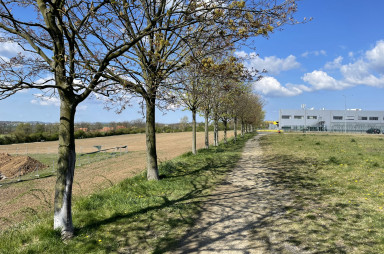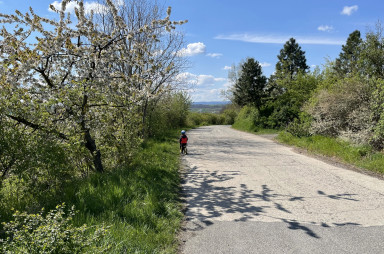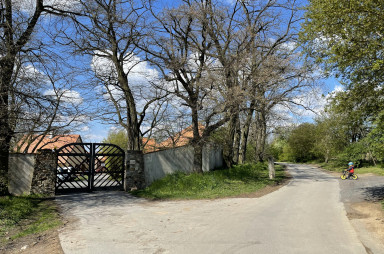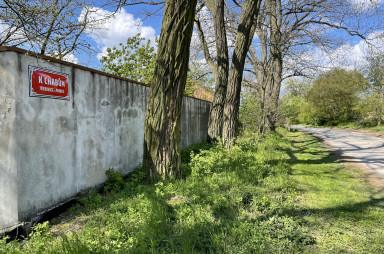Walk from Britské čtvrti to Krtně and back
In this article, we’d like to share one of our favorite walking routes around Britská čtvrť. It’s relatively short—about 4 kilometers—so even small children can manage it on foot or by bike. At the same time, it’s a charming route: just a few steps from the lively urban neighborhood, you’ll find yourself in a truly countryside atmosphere.
We start our walk on Bessemerova Street. At the end of the street, there’s a row of trees leading behind the Home Park Zličín building. But this time, we’re not here for shopping. We continue along a well-trodden path for about 150 meters and then turn left at the fork. This leads us toward the picturesque hamlet of Chaby, made up of several historic buildings. They were once farmhouses, but today they serve mostly as residences. There’s also a riding club based here, so horses are a common sight.
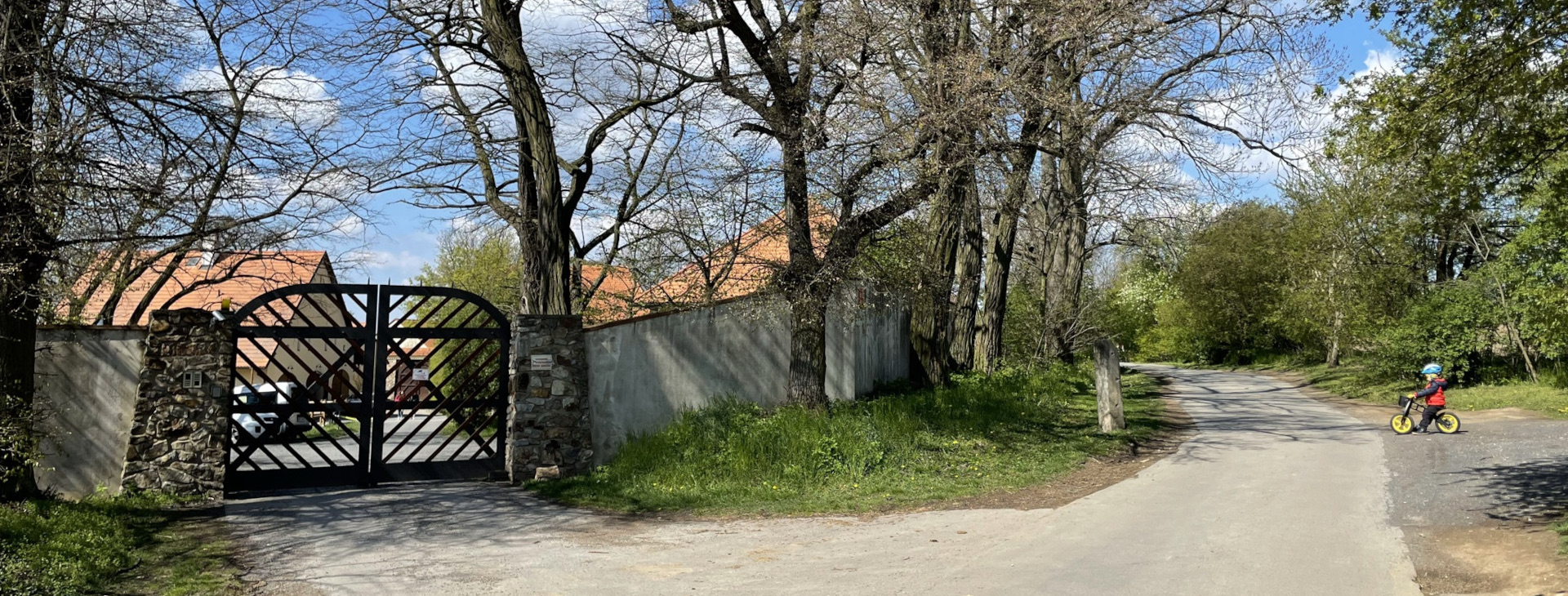
The Long-Lost Village of Krteň
Once you cross the street K Chabům to the far end of the hamlet, take the path to the right. After about a hundred meters through the trees, you’ll reach a small, somewhat weathered but charming chapel—a peaceful place to pause and reflect before continuing on. The neoclassical chapel likely dates back to 1850 and was built by the Havluj couple, who lived in the local farmhouse number 3.
Return to the fork and head down along the wall of the nearby estate. It’s about 600 meters along a field path to Krteň. The village of Krteň was destroyed after the Thirty Years’ War when it was burned down by marauding Swedes. What remains is a rare village church, a cemetery, and a spring hidden in the woods across from the church. In modern times, a resting spot for travelers and a dolmen—a stone sculpture inspired by ancient megalithic structures—have been added.
The Church of Saints John and Paul in Krteň is said to lie exactly halfway between Prague Castle and Karlštejn Castle. The royal route connecting the two measures 25 kilometers in total and, according to legend, can still be walked today. Some tales claim that the village got its name from moles—specifically their molehills—which were said to appear right before one’s eyes. Princess Libuše herself is said to have witnessed this phenomenon near the church. Emperor Charles IV was supposedly woken up by moles just in time to fend off a bear.
A Pagan Past
Since 2010, a stone table sculpture—known as a dolmen—has stood in the meadow behind the church. It’s meant to evoke a time when a pagan fort might have existed in the area. The sculpture is made from primary Ordovician shale, inspired by megalithic monuments of ancient civilizations.
For the way back, we take a different route: across the fields and past the Chaby hamlet from the opposite side. There you’ll find a memorable linden tree. Although it’s partially hidden behind the wall of a private property, it still remains quite visible and impressive. It’s said to be the oldest and largest linden tree in Prague, over 250 years old.
To return to Britská čtvrť from the hamlet, you can simply retrace your steps, or, at the fork near Chaby, follow the road to the right, which will lead you to the level of Svitákova Street.

